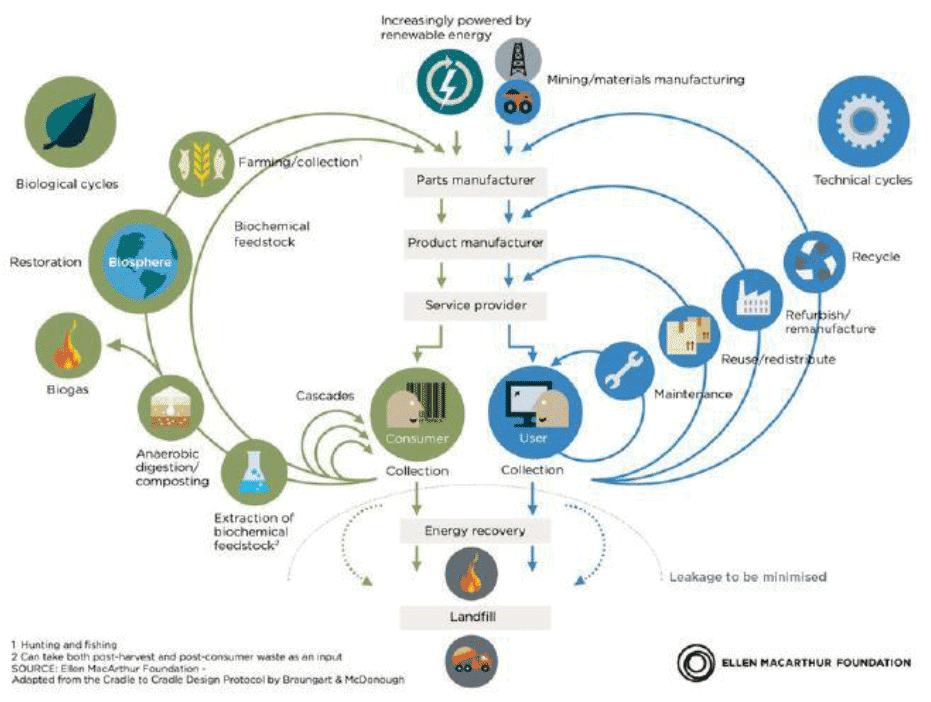Making Things Last: a circular economy strategy for Scotland
Our circular economy strategy to build a strong economy, protect our resources and support the environment.
Introduction - The Case for a Circular Economy
In our existing economy, we " take, make and dispose". We take resources from the ground, air and water; we make them into products and structures; then we dispose of them.
In a circular economy, systems are designed to make better use of valuable products and materials - changing the way they are produced and managed to have less impact on finite natural resources, and create greater economic benefit. The following diagram from the Ellen MacArthur Foundation sets out the concept.

The left hand side of the diagram represents the flow of biological materials in a circular economy. The right hand side represents the flow of materials and products such as metals, plastics etc. Similar principles apply to both sides of the diagram, and there are multiple interactions between them.
The most desirable actions are in the smallest, inner loops, such as maintenance and reuse. Value is lost as the loops become larger and when materials "leak" from the system. A more circular economy aims to protect that value by keeping products and materials circulating at the highest value for the longest time; with a systematic approach to designing out negative impacts such as waste.
There are many reasons why a more circular economy presents a compelling proposition:
- mitigating risk to business;
- retaining value in our economy;
- creating jobs and growth;
- tackling climate change and preserving natural capital; and
- building on Scotland's advantages.
There are significant environmental benefits to a more circular economy: from reducing greenhouse gas emissions, relieving pressure on water resources, virgin materials and habitats, and limiting pollution of air, soils and watercourses.
Zero Waste Scotland has estimated a potential greenhouse gas saving of around 11 million tonnes per annum by 2050 from moving to a circular economy [1] .
There is a growing body of evidence on the scale of the economic opportunity from a more circular economy. Analysis by the Ellen MacArthur Foundation and McKinsey suggests there could be a trillion dollar opportunity globally [2] .
Early analysis has suggested that action across 8 manufacturing sub-sectors could result in annual cost savings of £0.8-1.5 billion [3] in Scotland. This equates to around 5 to 9% of total turnover of these manufacturing sub-sectors. Likewise an analysis of 10 consumer goods categories, such as clothes and food, revealed potential annual cost savings of £1.5 billion [3] .
The shift in focus from using resources more efficiently towards re-using resources across the economy not only boosts productivity (by reducing demand and cost of raw materials) but also stimulates innovation, in terms of product re design, re use and re manufacture. It is a key policy priority in leading economies including Denmark, Sweden, Netherlands, Japan and China.
A more circular economy incentivises companies to innovate through re-using products and materials; and creates jobs by revolutionising logistics and collection systems. It is also viewed as a strategic opportunity by many global companies who see it as a key lever to improve competitiveness.
Scotland is in a strong position to move quickly and take advantage of our scale and connectedness. This strategy sets out our priorities for action.
Contact
There is a problem
Thanks for your feedback